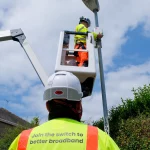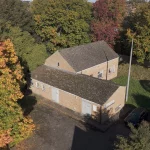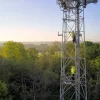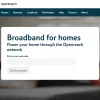Q1 2018 BDUK Extend Superfast Broadband to 4.85 Million Premises
The £1.6bn+ state aid supported Broadband Delivery UK programme has published its final progress update for Q1 2018, which confirms that it has so far helped 4,852,808 extra premises across the United Kingdom to be put within reach of a fixed “superfast broadband” (24Mbps+) network.
Currently a little over 95% of premises in the UK are estimated to be within reach of a fixed line superfast broadband network, which is partly thanks to the Government’s BDUK scheme. The next step will be to extend this to 98% by around 2020, while the final 2% is expected to be tackled via a mix of alternative network providers (altnets) and the forthcoming 10Mbps Universal Service Obligation (USO).
Most of the BDUK roll-outs have been supported by contracts that harness Openreach’s (BT) ‘up to’ 80Mbps Fibre-to-the-Cabinet (FTTC) and a small bit of their ultrafast Fibre-to-the-Premise (FTTP) technology. More recently we’ve also seen fixed line and wireless altnets like Gigaclear, Call Flow, UKB Networks and Airband win a number of contracts, particularly around remote rural premises where Openreach tends to struggle.
Advertisement
We should point out that the Government has made this their final quarterly “premises passed” progress update for the BDUK programme, which is disappointing because related deployments are expected to continue until 2020 (tracking progress will now become harder); albeit at a slower pace due to the completion of the primary Phase 1 + 2 contract phases.
We will however be able to include some of the same details when periodically updating on take-up (example).
Q1 2018 Progress Report
The “premises passed” figure used below only reflects those properties (homes and businesses) able to access “superfast” speeds of 24Mbps+ as a result of BDUK linked investment (i.e. it excludes those that have benefited but which only receive sub-24Mbps speeds). Similarly the data excludes “overspill effects” of BDUK-supported projects on premises which already have superfast broadband.
The following table only shows state aid from the Government’s project (BDUK) and does NOT include match-funding from local councils, the EU and other public or even private sources.
Advertisement

The headline figures used above are said to be cash based (i.e. when grants are made or budgets transferred). On an accruals basis, which matches costs incurred to the timing of delivery, cumulative BDUK expenditure to the end of December 2017 has been estimated as £637,129,745 and that equates to 7,617 premises covered per £million of BDUK expenditure (expenditure is higher for this because the work has been delivered in advance of payment).
The roll-out pace has slowed but that is normal because the programme is currently reaching some of the most challenging rural and tedious sub-urban locations (e.g. Exchange Only Lines), which cost more and deliver fewer premises passed in the same space of time.
There’s also a question mark over the impact of clawback (gainshare) on the figures, which sees suppliers like BT return some of the public investment when take-up goes beyond the 20% mark in related areas. So far up to £536m could potentially be returned (here), which can then be reinvested into further broadband improvements. On top of that around £210m from efficiency savings will also be available (here).
Advertisement
Most or all of the above funding / reinvestment will be used to help bridge the gap between 95% and 98% coverage by 2020.
NOTE 1: Future deployment phases (i.e. those aiming to deliver coverage above 95%) will be adopting the slightly improved 30Mbps+ definition for “superfast broadband“. The EU and Ofcom have been using this definition for many years, although official BDUK contracts were slow to do the same.
NOTE 2: The above expenditure figures exclude support for Connection Vouchers, the Mobile Infrastructure Project, the Rural Communities Broadband Fund, the Market Test Pilots, DCMS administrative expenditure and the new “Full Fibre” programmes.
NOTE 3: As we reported in October 2017 (here), BDUK supported projects have overbuilt some of Virgin Media’s network to the tune of around 1 million premises, although such premises are not eligible for public funding and so haven’t been included into the above total.
NOTE 4: The commercial market (i.e. purely private investment) has already enabled operators, such as BT and Virgin Media, to extend the reach of superfast broadband to around 76% of UK premises. However the major operators’ tend to view many of those in the final 24% as being “not commercially viable,” hence the reason for BDUK being setup to boost the roll-out via public investment.

Mark is a professional technology writer, IT consultant and computer engineer from Dorset (England), he also founded ISPreview in 1999 and enjoys analysing the latest telecoms and broadband developments. Find me on X (Twitter), Mastodon, Facebook, BlueSky, Threads.net and Linkedin.
« Gigaclear Spend £6.2m to Extend 1Gbps FTTP Broadband in Kent
















































Comments are closed